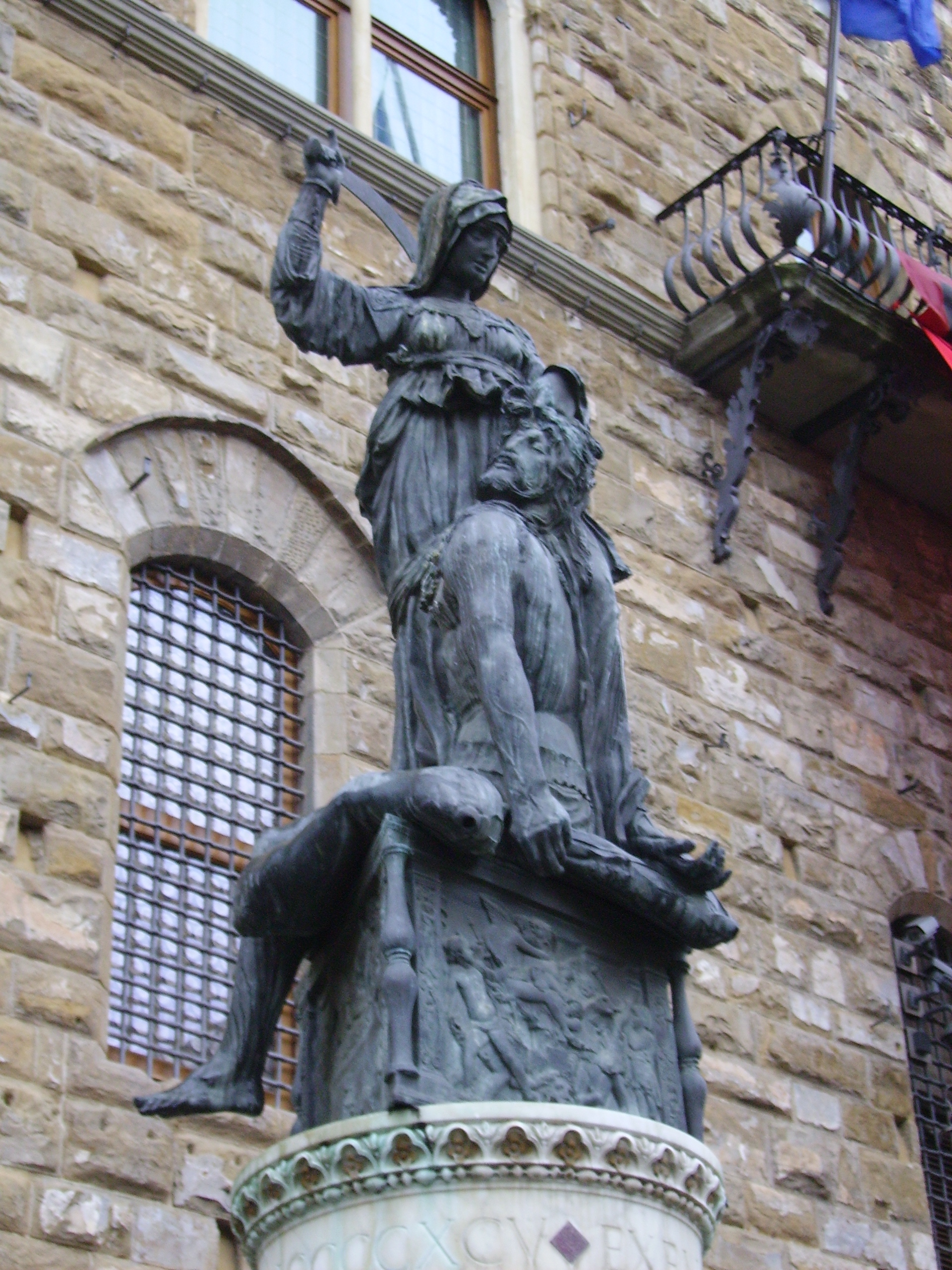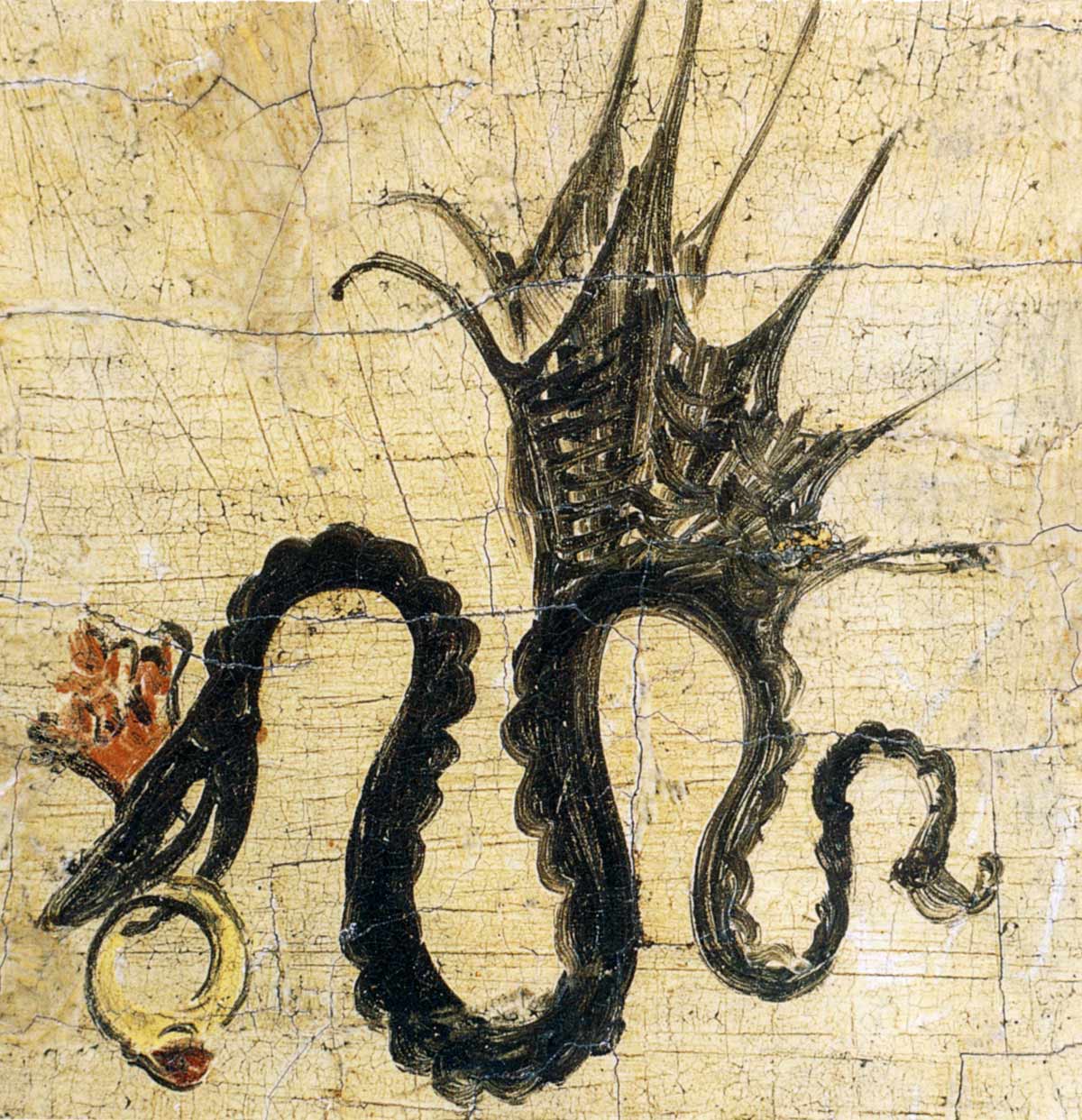|
Judith Slaying Holofernes (Artemisia Gentileschi, Naples)
''Judith Slaying Holofernes'' is a painting by the Italian early Baroque artist Artemisia Gentileschi, completed in 1612-13 and now at the Museo Capodimonte, Naples, Italy. The picture is considered one of her iconic works. The canvas shows Judith beheading Holofernes. The subject takes an episode from the apocryphal Book of Judith in the Old Testament, which recounts the assassination of the Assyrian general Holofernes by the Israelite heroine Judith. The painting shows the moment when Judith, helped by her maidservant Abra, beheads the general after he has fallen asleep in a drunken stupor. She painted a second version now in the Uffizi, Florence, somewhere between 1613 and 1621. Early feminist critics interpreted the painting as a form of visual revenge following Gentileschi's rape by Agostino Tassi in 1611; similarly many other art historians see the painting in the context of her achievement in portraying strong women. Creation Artemisia Gentileschi was around twe ... [...More Info...] [...Related Items...] OR: [Wikipedia] [Google] [Baidu] |
Artemisia Gentileschi
Artemisia Lomi or Artemisia Gentileschi (, ; 8 July 1593) was an Italian Baroque painter. Gentileschi is considered among the most accomplished seventeenth-century artists, initially working in the style of Caravaggio. She was producing professional work by the age of 15. In an era when women had few opportunities to pursue artistic training or work as professional artists, Gentileschi was the first woman to become a member of the Accademia di Arte del Disegno in Florence and she had an international clientele. Many of Gentileschi's paintings feature women from myths, allegories, and the Bible, including victims, suicides, and warriors. Some of her best known subjects are ''Susanna and the Elders'' (particularly the 1610 version in Pommersfelden), ''Judith Slaying Holofernes'' (her 1614–1620 version is in the Uffizi gallery), and '' Judith and Her Maidservant'' (her version of 1625 is in the Detroit Institute of Arts). Gentileschi was known for being able to depict the f ... [...More Info...] [...Related Items...] OR: [Wikipedia] [Google] [Baidu] |
Facial Expression
A facial expression is one or more motions or positions of the muscles beneath the skin of the face. According to one set of controversial theories, these movements convey the emotional state of an individual to observers. Facial expressions are a form of nonverbal communication. They are a primary means of conveying social information between humans, but they also occur in most other mammals and some other animal species. (For a discussion of the controversies on these claims, see Fridlund and Russell & Fernandez Dols.) Humans can adopt a facial expression voluntarily or involuntarily, and the neural mechanisms responsible for controlling the expression differ in each case. Voluntary facial expressions are often socially conditioned and follow a cortical route in the brain. Conversely, involuntary facial expressions are believed to be innate and follow a subcortical route in the brain. Facial recognition can be an emotional experience for the brain and the amygdala is highly invo ... [...More Info...] [...Related Items...] OR: [Wikipedia] [Google] [Baidu] |
Judith And Holofernes (Donatello)
''Judith and Holofernes'' (1457–1464) is a bronze sculpture by the Italian Renaissance sculptor Donatello at the end of his career. It is located in the Hall of Lilies (Sala dei Gigli), in the Palazzo Vecchio, Florence, Italy. A copy stands in one of the sculpture's original positions on the Piazza della Signoria, in front of the Palazzo Vecchio. It depicts the assassination of the Assyrian general Holofernes by Judith and is remarkable for being one of the first Renaissance sculptures to be conceived in the round, with its four distinct faces. The subject of Judith beheading Holofernes, depicting the climax of the story in the deuterocanonical Book of Judith, was a common subject in art and is associated with the Power of Women topos. Background and description The statue was commissioned by Cosimo de' Medici as a decoration for the fountain in the garden of the Palazzo Medici-Riccardi. Together with Donatello's ''David'', it was positioned in front of the palace around 1457, ... [...More Info...] [...Related Items...] OR: [Wikipedia] [Google] [Baidu] |
Donatello
Donato di Niccolò di Betto Bardi ( – 13 December 1466), better known as Donatello ( ), was a Republic of Florence, Florentine sculptor of the Renaissance period. Born in Republic of Florence, Florence, he studied classical sculpture and used this to develop a complete Renaissance style in sculpture. He spent time in other cities, and while there he worked on commissions and taught others; his periods in Rome, Padua, and Siena introduced to other parts of Italy his techniques, developed in the course of a long and productive career. Financed by Cosimo de' Medici, Donatello's ''David (Donatello), David'' was the first freestanding Nude (art), nude male sculpture since antiquity. He worked with stone, bronze, wood, clay, stucco, and wax, and had several assistants, with four perhaps being a typical number. Although his best-known works mostly were statues in the round, he developed a new, very shallow, type of bas-relief for small works, and a good deal of his output was large ... [...More Info...] [...Related Items...] OR: [Wikipedia] [Google] [Baidu] |
Decapitation
Decapitation or beheading is the total separation of the head from the body. Such an injury is invariably fatal to humans and most other animals, since it deprives the brain of oxygenated blood, while all other organs are deprived of the involuntary functions that are needed for the body to function. The term ''beheading'' refers to the act of deliberately decapitating a person, either as a means of murder or as an execution; it may be performed with an axe, sword, knife, machete or by mechanical means such as a guillotine or chainsaw. An executioner who carries out executions by beheading is sometimes called a headsman. Accidental decapitation can be the result of an explosion, a car or industrial accident, improperly administered execution by hanging or other violent injury. Suicide by decapitation is rare but not unknown. The national laws of Saudi Arabia, Yemen, and Qatar permit beheading; however, in practice, Saudi Arabia is the only country that continues to behead i ... [...More Info...] [...Related Items...] OR: [Wikipedia] [Google] [Baidu] |
Lucas Cranach The Elder
Lucas Cranach the Elder (german: Lucas Cranach der Ältere ; – 16 October 1553) was a German Renaissance painter and printmaker in woodcut and engraving. He was court painter to the Electors of Saxony for most of his career, and is known for his portraits, both of German princes and those of the leaders of the Protestant Reformation, whose cause he embraced with enthusiasm. He was a close friend of Martin Luther. Cranach also painted religious subjects, first in the Catholic tradition, and later trying to find new ways of conveying Lutheran religious concerns in art. He continued throughout his career to paint nude subjects drawn from mythology and religion. Cranach had a large workshop and many of his works exist in different versions; his son Lucas Cranach the Younger and others continued to create versions of his father's works for decades after his death. He has been considered the most successful German artist of his time. Early life He was born at Kronach in uppe ... [...More Info...] [...Related Items...] OR: [Wikipedia] [Google] [Baidu] |
Renaissance
The Renaissance ( , ) , from , with the same meanings. is a period in European history marking the transition from the Middle Ages to modernity and covering the 15th and 16th centuries, characterized by an effort to revive and surpass ideas and achievements of classical antiquity. It occurred after the Crisis of the Late Middle Ages and was associated with great social change. In addition to the standard periodization, proponents of a "long Renaissance" may put its beginning in the 14th century and its end in the 17th century. The traditional view focuses more on the early modern aspects of the Renaissance and argues that it was a break from the past, but many historians today focus more on its medieval aspects and argue that it was an extension of the Middle Ages. However, the beginnings of the period – the early Renaissance of the 15th century and the Italian Proto-Renaissance from around 1250 or 1300 – overlap considerably with the Late Middle Ages, conventionally da ... [...More Info...] [...Related Items...] OR: [Wikipedia] [Google] [Baidu] |
Patronage
Patronage is the support, encouragement, privilege, or financial aid that an organization or individual bestows on another. In the history of art, arts patronage refers to the support that kings, popes, and the wealthy have provided to artists such as musicians, painters, and sculptors. It can also refer to the right of bestowing offices or Benefice, church benefices, the business given to a store by a regular customer, and the patron saint, guardianship of saints. The word "patron" derives from the la, patronus ("patron"), one who gives benefits to his clients (see Patronage in ancient Rome). In some countries the term is used to describe political patronage or patronal politics, which is the use of state resources to reward individuals for their electoral support. Some patronage systems are legal, as in the Canadian tradition of the Prime Minister to appoint Senate of Canada, senators and the heads of a number of commissions and agencies; in many cases, these appointments go to ... [...More Info...] [...Related Items...] OR: [Wikipedia] [Google] [Baidu] |
Spurts Of Blood
Blood squirt (blood spurt, blood spray, blood gush, or blood jet) is the effect when an artery is ruptured. Blood pressure causes the blood to bleed out at a rapid, intermittent rate in a spray or jet, coinciding with the pulse, rather than the slower, but steady flow of venous bleeding. Also known as arterial bleeding, arterial spurting, or arterial gushing, the amount of blood loss can be copious, occur very rapidly, and can led to death by a process called exsanguination. Anatomy In cut carotid arteries with 100 mL of blood through the heart at each beat (at 65 beats a minute), a completely severed artery will spurt blood for about 30 seconds and the blood will not spurt much higher than the human head. If the artery is just nicked, on the other hand, the blood will spurt longer but will be coming out under pressure and spraying much farther. To prevent hand ischemia, there is a "squirt test" that involves squirting blood from the radial artery, which is used in intraope ... [...More Info...] [...Related Items...] OR: [Wikipedia] [Google] [Baidu] |
Heroine
A hero (feminine: heroine) is a real person or a main fictional character who, in the face of danger, combats adversity through feats of ingenuity, courage, or strength. Like other formerly gender-specific terms (like ''actor''), ''hero'' is often used to refer to any gender, though ''heroine'' only refers to women. The original hero type of classical epics did such things for the sake of glory and honor. Post-classical and modern heroes, on the other hand, perform great deeds or selfless acts for the common good instead of the classical goal of wealth, pride, and fame. The antonym of ''hero'' is ''villain''. Other terms associated with the concept of ''hero'' may include ''good guy'' or ''white hat''. In classical literature, the hero is the main or revered character in heroic epic poetry celebrated through ancient legends of a people, often striving for military conquest and living by a continually flawed personal honor code. The definition of a hero has changed throu ... [...More Info...] [...Related Items...] OR: [Wikipedia] [Google] [Baidu] |






_(31023042187)_CROP.jpg)
